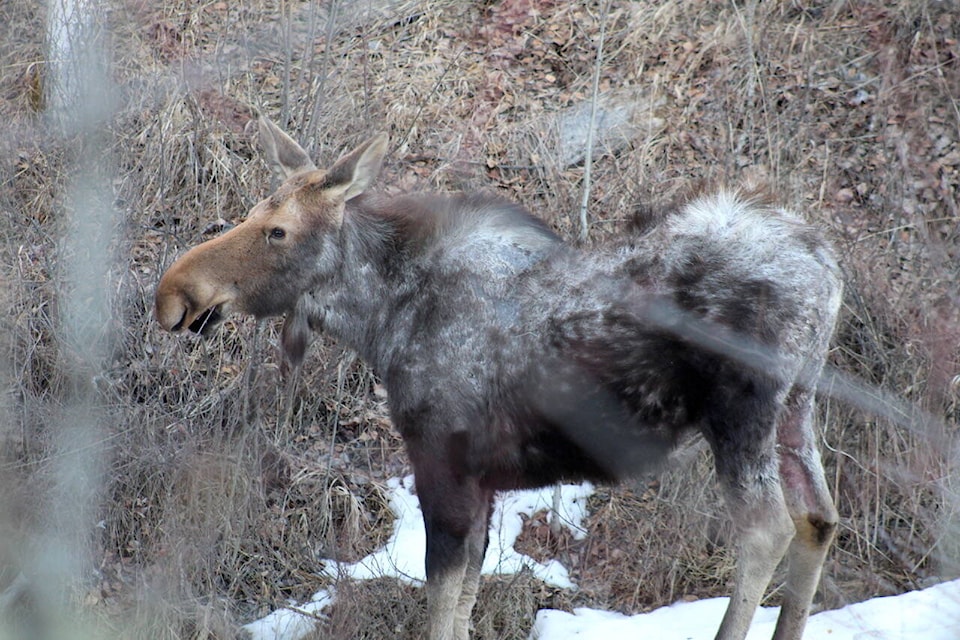It was a very sad day last week when a young moose came to visit us and bedded down for several hours of rest on our property. It looked like one of last year’s calves, but it was in terrible condition and obviously had a bad tick infestation.
The long guard hairs on its flanks were gone, probably from rubbing against the trees trying to rid itself of the ticks. Higher up on the sides and across its back all that remained were untidy tufts of hair and some big white patches.
Sometimes moose can appear pale greyish white from constant rubbing leaving only the shafts of the guard hairs, earning them the name “ghost moose.”
Moose are particularly susceptible to winter tick infestations because they cannot groom themselves and may end up rubbing off all their protective winter coat leaving them exposed to cold winter temperatures.
However, recent relatively mild winters combined with previous severe drought is making things even worse. In all the years I have spent in the bush in the Northwest, I have never seen woody shrubs wilting in the forest before. This must mean the soils are very dry deep down.
Moose rely on succulent woody twigs of willows and red-osier dogwood, plus some young subalpine fir and other shrubs, to tide them over the winter months. The fall was so dry that moose here went into winter without the nutritious food reserves they needed. What foods were out there over winter were also not in great shape.
Being well-fed before winter helps the moose to resist or overcome the impacts of tick infestations, but the warmer, dry conditions we are facing now means many, especially younger and older animals are going to die.
Our moose calf wobbled its way up our driveway and, as it stopped to eat (or drink) something in the ditch, I could see its eyes were a ghostly white.
I learned from talking to Angelika (Langen) at Northern Lights Wildlife Shelter that this meant it is going blind and dying and there is nothing anyone can do to save it. She predicts many will die — yet more victims of climate warming.
